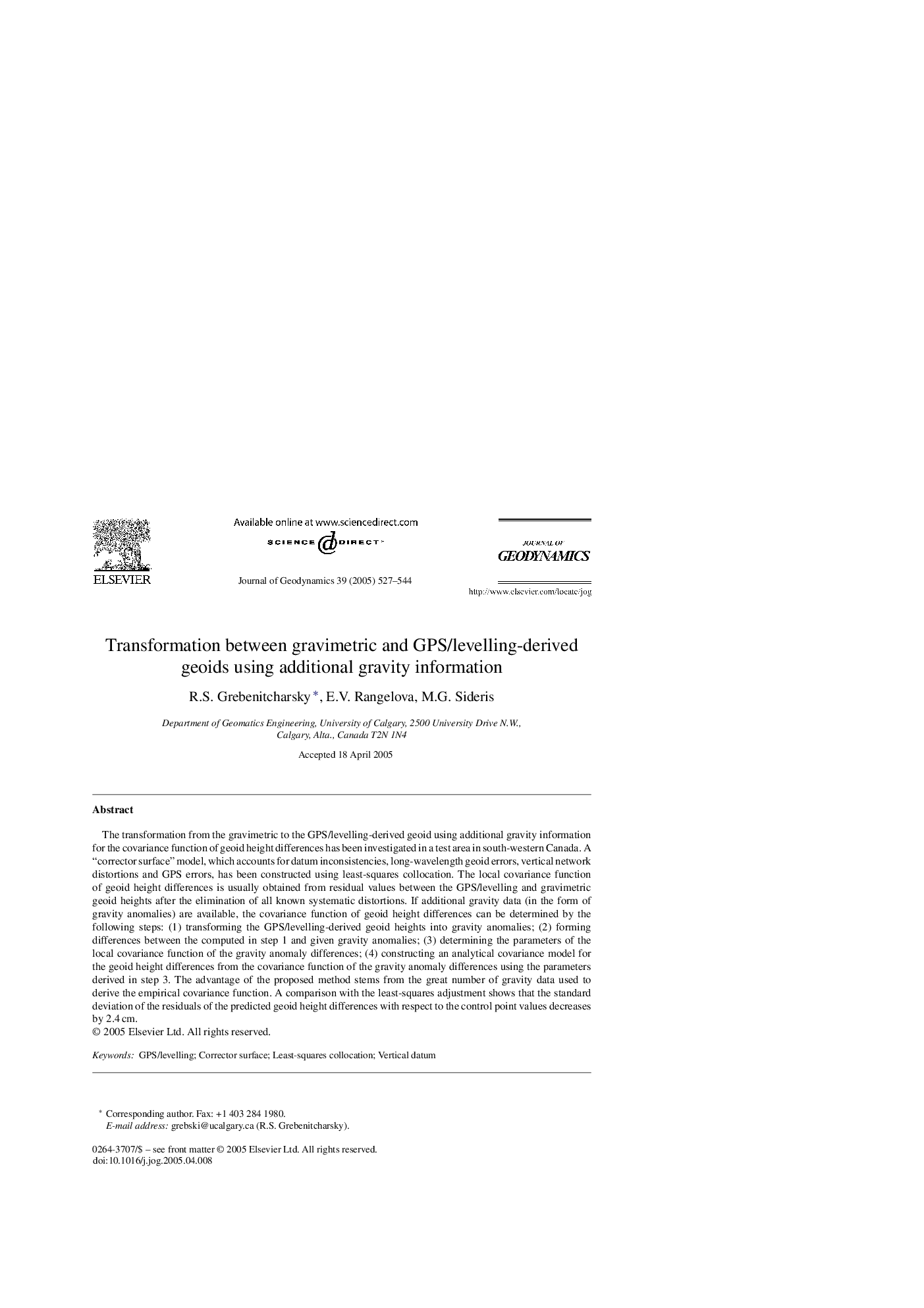| Article ID | Journal | Published Year | Pages | File Type |
|---|---|---|---|---|
| 9525698 | Journal of Geodynamics | 2005 | 18 Pages |
Abstract
The transformation from the gravimetric to the GPS/levelling-derived geoid using additional gravity information for the covariance function of geoid height differences has been investigated in a test area in south-western Canada. A “corrector surface” model, which accounts for datum inconsistencies, long-wavelength geoid errors, vertical network distortions and GPS errors, has been constructed using least-squares collocation. The local covariance function of geoid height differences is usually obtained from residual values between the GPS/levelling and gravimetric geoid heights after the elimination of all known systematic distortions. If additional gravity data (in the form of gravity anomalies) are available, the covariance function of geoid height differences can be determined by the following steps: (1) transforming the GPS/levelling-derived geoid heights into gravity anomalies; (2) forming differences between the computed in step 1 and given gravity anomalies; (3) determining the parameters of the local covariance function of the gravity anomaly differences; (4) constructing an analytical covariance model for the geoid height differences from the covariance function of the gravity anomaly differences using the parameters derived in step 3. The advantage of the proposed method stems from the great number of gravity data used to derive the empirical covariance function. A comparison with the least-squares adjustment shows that the standard deviation of the residuals of the predicted geoid height differences with respect to the control point values decreases by 2.4Â cm.
Related Topics
Physical Sciences and Engineering
Earth and Planetary Sciences
Earth-Surface Processes
Authors
R.S. Grebenitcharsky, E.V. Rangelova, M.G. Sideris,
